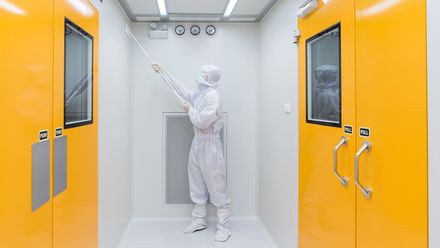Introduction:
In the world of pharmaceutical and food manufacturing, ensuring the highest level of product safety is paramount. The Good Manufacturing Practices (GMP) standards, established by the FDA, provide a comprehensive framework for maintaining product quality and safety. Within these standards, one critical aspect that deserves our attention is Sanitization Procedures.

GMP Standards: The Backbone of Sanitization
The GMP standards, as outlined in 21CFR 211.56, emphasize the necessity of written procedures for the use of various agents, including rodenticides, insecticides, fungicides, fumigating agents, cleaning agents, and sanitizers. These procedures are designed to prevent contamination of equipment, containers, closures, packaging, labeling materials, and drug products.
One key point in this standard is that rodenticides, insecticides, and fungicides must be used in accordance with the Federal Insecticide, Fungicide, and Rodenticide Act (FIFRA), which ensures their safety and effectiveness.
Microbial Resistance: A Looming Concern
Microbial resistance to antibiotics is a well-known issue, but did you know that it's less likely to develop resistance to disinfectants? This is because disinfectants are more potent biocidal agents and are used at high concentrations against relatively small populations of microbes that are often not actively growing. As a result, the selective pressure for resistance development is less profound.
Nonetheless, to ensure the continued effectiveness of disinfectants, environmental monitoring programs may subject commonly isolated microbes to susceptibility testing. It is also recommended to incorporate sporicidal agents into your sanitization regimen, although daily use is not favored due to equipment corrosion and operator safety concerns.
Choosing the Right Disinfectants and Sanitizers
To ensure the safety and efficacy of sanitization procedures, it's essential to choose the right disinfectants and sanitizers. Here are some options:
1. Chlorhexidine: A versatile antiseptic with antibacterial activity against both Gram-positive and Gram-negative bacteria.
2. Quaternary Ammonium Compounds (QACs): These compounds have high antimicrobial activity, particularly against vegetative cells.
3. Formaldehyde: While effective, it's important to note that it's a carcinogen.
4. Glutaraldehyde (Cidex): Offers sporicidal activity, efficacy against vegetative cells, mycobacteria, fungi, and various types of viruses.
5. Iodophors: Act as surfactants and are sporicidal.
6. Chlorine-Releasing Compounds: Hypochlorite is a common option with high antimicrobial activity, including sporicidal properties.
7. Peroxygens: Including Hydrogen Peroxide and Peracetic Acid, they are bactericidal, sporicidal, and serve as antiseptics and sanitizers.
The FDA also recommends the regular assessment of disinfecting agents and procedures to ensure their suitability and effectiveness.
Conclusion: Prioritizing Sanitization in Pharmaceuticals and Food Facilities
Understanding and implementing GMP standards for sanitization procedures is essential in pharmaceutical and food manufacturing. By adhering to these guidelines and choosing the right disinfectants and sanitizers, you not only maintain the safety and quality of your products but also contribute to the global effort to prevent microbial resistance. Let's continue to prioritize sanitization, making our products safer and more reliable for consumers worldwide.
References
1. FDA, PART 211.56 - CURRENT GOOD MANUFACTURING PRACTICE FOR FINISHED PHARMACEUTICALS